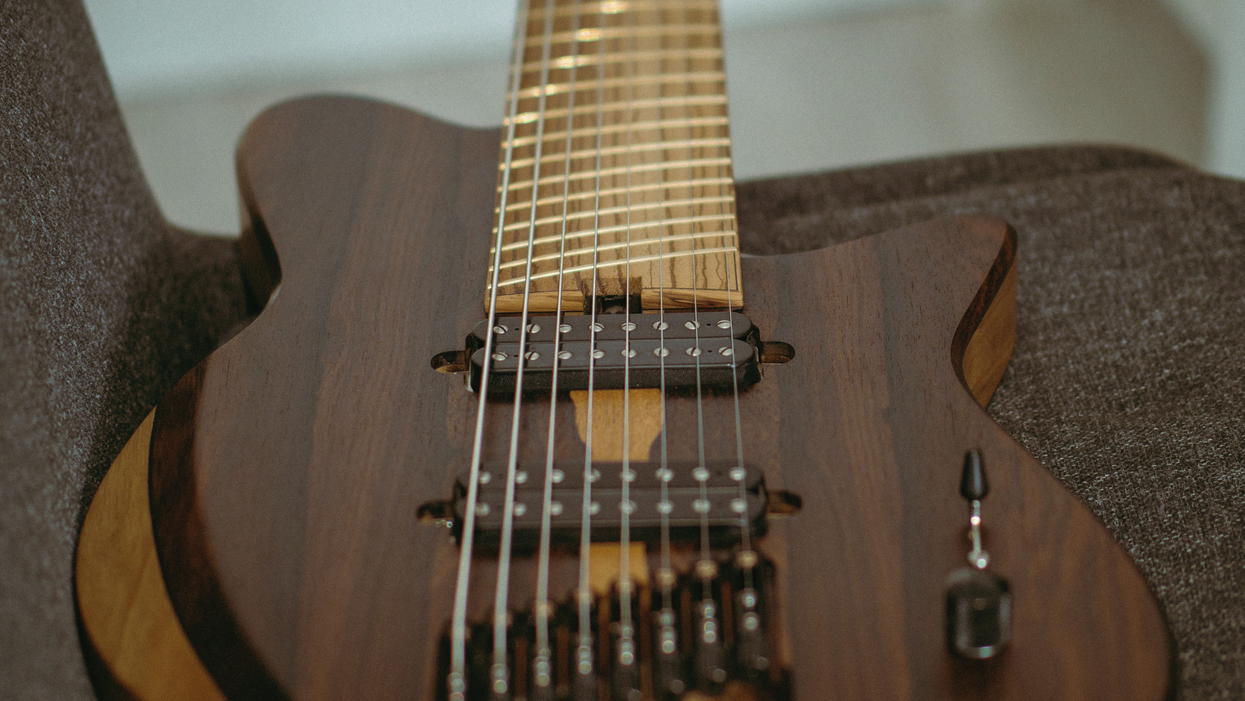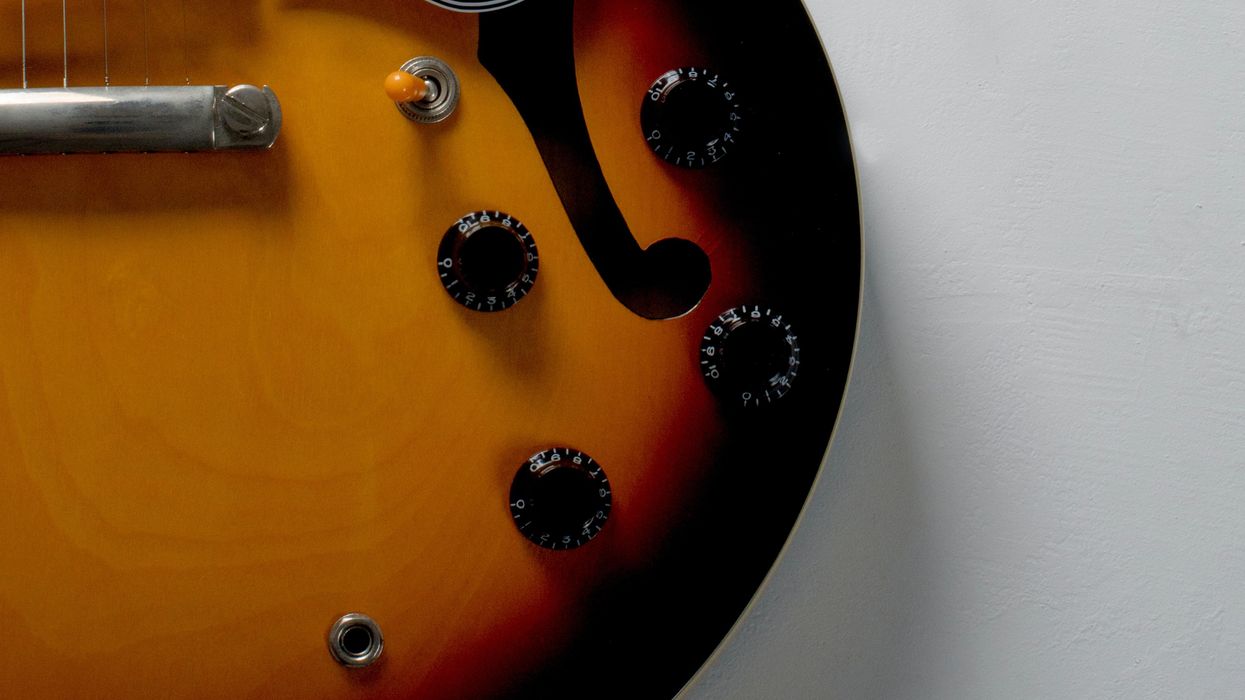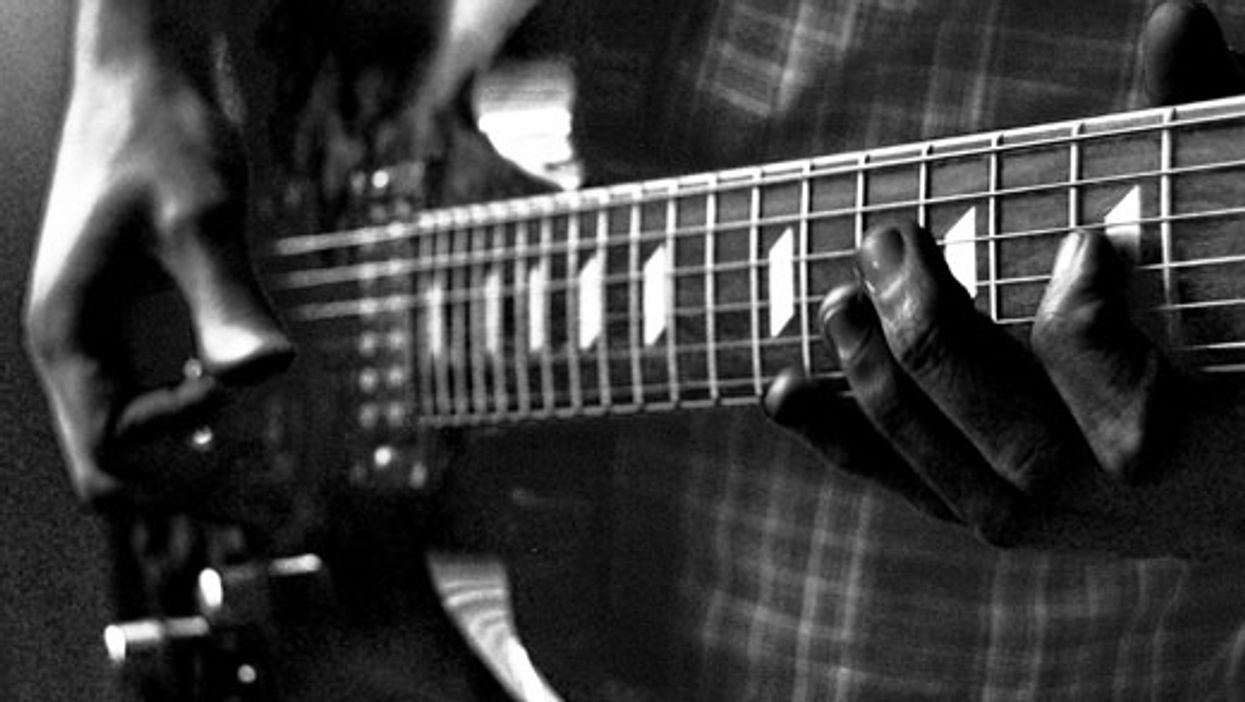Let’s take an in-depth look at how to incorporate legato techniques into your playing. In its most basic form, this is simply using various hammer-ons, pull-offs, and slides—collectively known as slurs—to create a smooth and fluid sound. Many guitarists use this technique to great effect, and Allan Holdsworth, Brett Garsed, Joe Satriani, and Eddie Van Halen are among those who have developed individual approaches to this technique.
They also play very fast and unusual note groupings that don’t have a strict regimented rhythm, which creates the effect of playing “across the beat.” Check out the legato lines on the classic Van Halen track “Drop Dead Legs.”
Drop Dead Legs (2015 Remaster)
Joe Satriani and Richie Kotzen have another approach to the technique, where they use diatonic lines based around three-note-per-string scale patterns. Satriani often plays shorts spurts of legato with long held notes, once again playing over the beat. Some great examples of this can be herd on “Flying in a Blue Dream.” Kotzen has a very strong fretting hand, and in addition to his scale-based lines, he uses his legato technique to play “outside” phrases and arpeggios.
Joe Satriani "Flying In A Blue Dream" At: Guitar Center
To my mind one of the best legato ambassadors is Brett Garsed, who uses the technique nearly exclusively. In conjunction with some hybrid picking, his legato fretwork produces a very full, rich sound. This approach takes a lot of dedication and discipline. Check out this video below of a solo Garsed performed in 1986 when he was only 23!
Brett Garsed Solo Live 1986
Fretting-hand position is very important when playing legato. I’d suggest positioning your thumb slightly lower on the back of the neck, rather than over the edge of the fretboard as you might when playing pentatonic ideas. Make sure that your fretting fingers are spaced out (roughly a finger per fret), and the notes are sounded with your fingertips. It’s also vital that you keep the fingers close to the fretboard because the pinky has a tendency to flap around slightly and is harder to control. Keeping it close means a more efficient left hand. This will also help with stamina, as your hand won’t become tired as quickly.
We should also consider the picking hand, as you will on occasion have to pick the first note in a run. It’s important not to pick too hard because you don’t want huge dynamic shifts between the plucked notes and those performed with hammer-ons and pull-offs. I’d suggest a light picking attack to match the volume of the notes initiated with your fretting hand. This is a great way to improve the interaction between the left and right hands when performing legato passages.
Another area that requires attention is muting open strings while playing legato lines. When working on the top strings, I mute the unused lower strings with the fleshy part of my palm, under the thumb. As I move my fretting hand across the strings, I gradually remove the picking-hand mute and transfer that duty to the first finger of my fretting hand.
Now let’s take a look at our examples, which include technical exercises to help you work on developing and improving the legato technique, as well as “real world” phrases based on the styles of various players.
Ex. 1 is a basic exercise that helps build strength and finger independence. It’s based around a hammer-on and pull-off idea with the first finger anchored at the 5th fret.
Ex. 1
Dig into Ex. 2 to develop both finger independence and endurance. The sequence can be tricky, so I’d suggest starting at a slow tempo and gradually building up speed. I’ve shown this pattern on the top four strings, but would encourage you to continue across the remaining strings.
Ex. 2
Ex. 3 is another timing and strength exercise that features an ascending and descending 16th-note triplet pattern. I’ve presented the sequence on the top three strings, and they should be repeated to build stamina. Practice these patterns with a metronome. You’ll really notice your fretting-hand strength improving.
Ex. 3
The goal with Ex. 4 is to be able to loop around a few times while keeping tone and time even. When ascending, use your first and second fingers, and when descending keep the fretting hands in the same position, but pull off between the fourth and second fingers. This is very tricky, but with perseverance you will achieve excellent finger independence and agility.
Ex. 4
We move on to three-note-per-string scales in Ex. 5. Although the scales are naturally arranged in groups of three, the 16th-note rhythm makes timing a bit trickier, but just as essential. When ascending, as you cross the strings start each new one with a downstroke. For the descending part of the lick, I like to start each new string with what Greg Howe calls a “hammer-on from nowhere.”
Ex. 5
Ex. 6 is another three-note-per-string exercise that’s based around two positions of G Dorian (G–A–Bb–C–D–E–F). This pattern also uses a 16th-note triplet rhythm with hammer-ons from nowhere on the descending part of the phrase.
Ex. 6
Now that some of the more technical exercises are out of the way, we can move to more stylistic legato examples. Ex. 7 is straight out of Richie Kotzen’s bag of tricks. The lick uses notes from A Aeolian (A–B–C–D–E–F–G) and moves up the 3rd string. This example is a real test for fretting-hand stamina, independence, and timing.
Ex. 7
We stick with Kotzen for Ex. 8, but this time we move to E Aeolian (E–F#–G–A–B–C–D). The phrase starts in the 8th position before shifting to the 5th, and finally ending in the 3rd position before resolving to the open 6th string.
Ex. 8
As you saw in the video above, Joe Satriani is an absolute master of legato and has made the technique a part of his signature sound. In Ex. 9, we call upon the C Lydian scale (C–D–E–F#–G–A–B) for something that could easily fit in “Flying in a Blue Dream.” Notice how we use fast flurries of notes, position shifts, and the sudden pauses on certain notes for emphasis.
Ex. 9
Ex. 10 is a John Petrucci-style phrase that’s based around the E Aeolian mode. An excellent addition to your vocabulary, this extended run features multiple position shifts and covers a large area of the fretboard.
Ex. 10
In Ex. 11, we combine arpeggios with pentatonics based in A minor. Pay attention to the wider pentatonic fingerings. Up to speed this is a great sounding lick!
Ex. 11
We move back to some Brett Garsed licks for Ex. 12. Here, we’re using notes from the A Aeolian scale on the top two strings. You’ll notice there are quite a few notes on each beat, so this is a real test of your agility.
Ex. 12
Finally in Ex. 13, we take some of Garsed’s stuff and stir in some Greg Howe. This lick makes use of three-note-per-string modal lines, string skipping, and pentatonic ideas in E minor. This is a very advanced lick, so be sure to break it down into bite-size chunks before gradually increasing the speed.







![Devon Eisenbarger [Katy Perry] Rig Rundown](https://www.premierguitar.com/media-library/youtube.jpg?id=61774583&width=1245&height=700&quality=70&coordinates=0%2C0%2C0%2C0)







